It’s necessary for hydroponic enthusiasts to choose the right air pump for their Deep Water Culture (DWC) systems. In 2025, they can find numerous quiet and reliable options that ensure optimal oxygenation for their plants, promoting healthy growth and robust yields. He or she will appreciate a well-selected air pump that not only operates efficiently but also minimizes noise, creating a more pleasant growing environment. This blog post reviews the top air pumps available, highlighting their performance, durability, and key features to aid growers in making informed decisions.
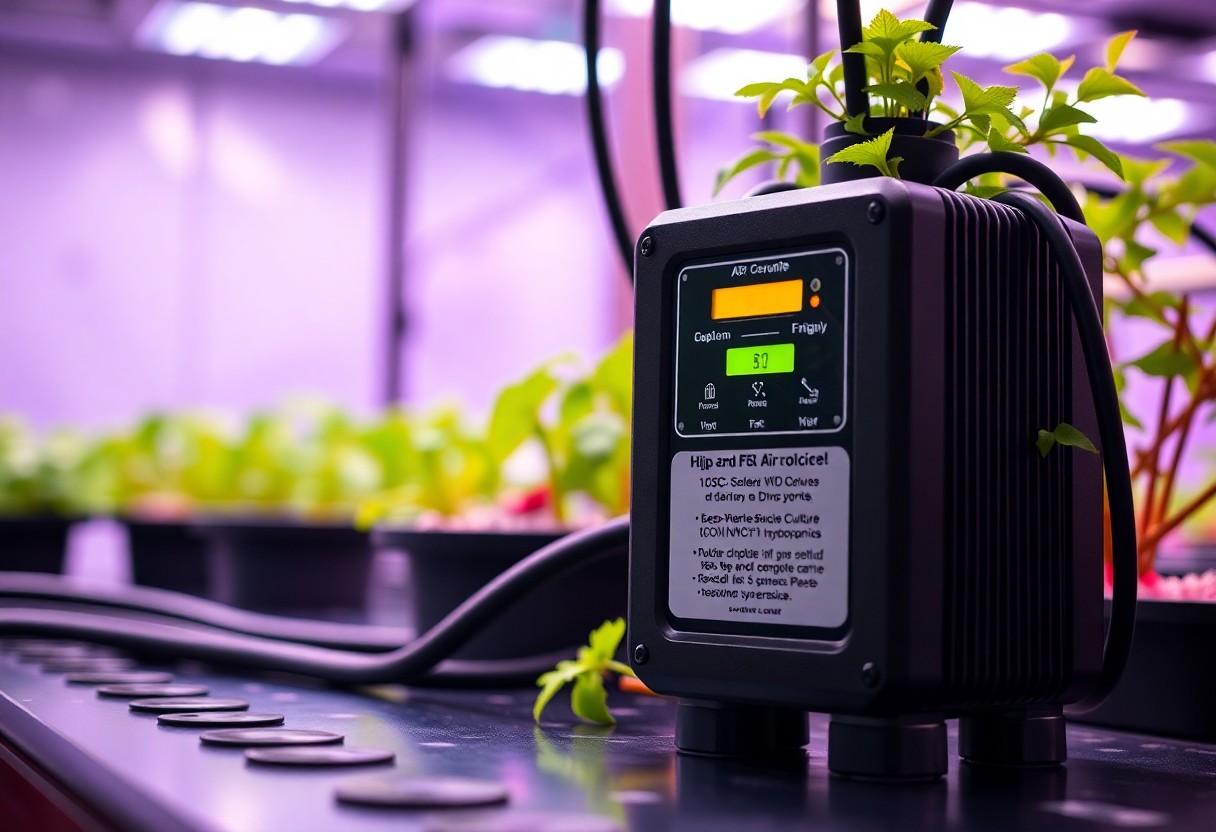
Key Takeaways:
- Look for air pumps specifically designed for Deep Water Culture (DWC) systems to ensure optimal oxygenation for plant roots.
- Noise level is an important consideration; select models known for quiet operation to maintain a peaceful growing environment.
- Reliability and durability should be prioritized; pumps with strong materials and construction tend to have longer lifespans.
- Check the airflow capacity of the pump to accommodate the size of your DWC system and number of plants.
- Read customer reviews and product ratings to gauge real-world performance and satisfaction before making a purchase.
The Role of Air Pumps in DWC Hydroponics
Importance of Oxygenation for Plant Growth
In a Deep Water Culture (DWC) hydroponic system, the presence of oxygen is vital for the healthy growth of plants. While plants absorb nutrients through their roots, they also rely on oxygen to facilitate various metabolic processes. Lack of adequate oxygen not only hinders growth but can also lead to root rot, stunted development, and wilting. Air pumps play a significant role in ensuring sufficient oxygen levels in the nutrient solution. By actively aerating the water, air pumps introduce bubbles that increase the surface area for oxygen exchange, significantly improving the environment for root health.
They create a well-oxygenated environment that supports the root systems, ultimately leading to a more robust and resilient plant. Studies have shown that optimal oxygenation can enhance root mass development by up to 50%, leading to substantial improvements in yield and plant vitality. This increased oxygen availability directly correlates with faster growth rates and higher quality produce, making an efficient air pump a non-negotiable element for any successful DWC setup.
How Air Pumps Enhance Nutrient Delivery
Air pumps not only facilitate oxygen transfer but also play a pivotal role in enhancing nutrient delivery to the plants. By agitating the nutrient solution, air pumps ensure that nutrients remain suspended and evenly distributed rather than settling at the bottom. In a well-aerated system, nutrient uptake by the roots becomes more efficient, as the plants can access an even concentration of necessary minerals at all times.
The introduction of air bubbles creates a dynamic environment that encourages nutrient diffusion throughout the water. For instance, when he or she uses a powerful air pump, they can experience nutrient uptake improvements of up to 30%. Additionally, air pumps prevent the formation of stagnant zones in the reservoir, ensuring that every part of the system receives an equal opportunity for nutrient absorption. This enhanced nutrient delivery results in healthier, more productive plants that thrive in the DWC environment.
Criteria for Selecting the Ideal Air Pump
Noise Level: Silent Powerhouses
Many hydroponic gardeners prefer air pumps that operate at a low noise level, allowing them to maintain a peaceful indoor environment. Models equipped with rubber feet or sound-dampening technology significantly reduce vibration and noise, making them ideal for home and office settings. For instance, some high-end air pumps produce less than 30 dB, comparable to a whisper, ensuring that they do not disrupt daily life.
The importance of noise reduction becomes evident during the night hours, especially for those who grow in residential areas or shared spaces. An air pump designed for quiet operation enhances overall user experience, allowing hydroponic enthusiasts to focus on their plants without the constant hum of machinery in the background.
Reliability and Longevity: Investing in Quality
Reliability is of utmost importance when selecting an air pump for DWC systems. Pumps that are built with high-quality materials often endure the rigors of continuous operation without succumbing to wear and tear. Users should observe warranties offered by manufacturers, as a longer warranty typically reflects confidence in the product’s durability. High-quality pumps can easily last over five years, demonstrating the value of investing in robust equipment.
A pump that consistently delivers performance is vital; interruptions can cause detrimental effects on oxygen levels in the nutrient solution, impacting plant growth. Users gravitate towards brands known for their reliability, as these pumps maintain their airflow capacity and function without the need for frequent replacements or repairs.
Hydroponic gardeners often share that investing in a reliable air pump saves money in the long run. While cheaper models may appear appealing, the increased risk of breakage or inadequate performance leads to higher maintenance costs and could compromise the crop yield. Shedding light on customer reviews and experiences provides insight into the longevity of a product, guiding more informed purchasing decisions.
Airflow Capacity: Balancing Performance with Size
A common consideration involves identifying the right balance of airflow capacity without compromising space efficiency. An ideal air pump for DWC systems should provide sufficient airflow to support the number of plants being grown, as too little oxygen leads to root stress and impairs growth. For example, pumps that offer 1-2 liters per minute of air per plant are typically adequate for most DWC setups.
The frustration of excessive space consumption or insufficient airflow can lead to murky decisions. Gardeners often calculate the total volume of their DWC system to determine the optimal pump size. They must ensure that the pump’s output aligns with the requirements of their specific setup for maximum efficiency and plant health.
Furthermore, airflow capacity not only needs to meet the demands of the plant count but also consider factors such as water temperature and dissolved oxygen levels. Pumps that oscillate between lower and higher rates may offer more versatility, allowing them to adapt to changing environmental conditions while keeping the system aerated effectively.

Top Picks for Quiet Air Pumps in 2025
Model Comparisons: Features and Benefits
Several air pumps stand out in the 2025 market, particularly for their noise reduction capabilities and robust features. Leading names include the EcoPlus Silent Air Pump, the Hailea ACO-9612, and the VIVOSUN 793 GPH Air Pump. Each of these models brings something unique to the table, tailored for deep water culture systems.
| Model | Features |
|---|---|
| EcoPlus Silent Air Pump | Ultra-quiet operation, energy-efficient, multiple outlet options |
| Hailea ACO-9612 | Durable construction, highly efficient, double air-output performance |
| VIVOSUN 793 GPH Air Pump | Compact design, low vibration, adjustable air flow control |
They have distinctive advantages; for example, the EcoPlus excels in energy efficiency while remaining near-silent, making it ideal for indoor gardeners sensitive to noise. The Hailea ACO-9612 is renowned for its durability and ability to handle multiple plants simultaneously. Meanwhile, the VIVOSUN is praised for its compactness and adjustable airflow, allowing users to fine-tune their aeration needs for varying plant sizes and growth stages.
Price Points: Value for Money Analysis
Investment in a quality air pump often correlates with the long-term health of a hydroponic setup, directly impacting plant yields. Prices vary significantly based on features, build quality, and brand reputation. For instance, while the EcoPlus Silent Air Pump retails around $60, its low operational costs and durability result in a solid value proposition. Conversely, the Hailea ACO-9612, usually priced at about $95, is considered a premium option that pays off with outstanding performance for larger systems.
Competitively priced, the VIVOSUN air pump offers similar functionalities for around $50, making it accessible for first-time hydroponic growers who may not want to break the bank. Evaluating these price points is crucial; a slightly higher initial investment may yield better results over time, emphasizing the importance of not solely focusing on upfront costs but rather on overall value and longevity in the hydroponic system. Selecting the right air pump can significantly influence both the success and scale of the hydroponic venture.
Deep Dive into Reliability: User Testimonials and Expert Opinions
Long-Term Performance Data
The reliability of air pumps for DWC systems can often be assessed through long-term performance data. Many users have shared their experiences with models that have stood the test of time, highlighting those that consistently provided adequate aeration over extended periods. For instance, the EcoPlus 728 GPH air pump has been noted for its durability, with some users reporting over two years of daily operation without deteriorating performance. Similarly, the VIVOSUN 800 GPH model receives positive attention for its longevity, often praised in reviews for maintaining a steady output even after months of heavy usage. These data points indicate a connection between consistent aeration and plant health, reinforcing the importance of selecting pumps proven to last. Additionally, expert feedback from hydroponics professionals sheds light on the imperative aspects of functionality and maintenance. Most experts note the significance of design features that promote airflow efficiency while minimizing wear and tear. Air pumps that utilize oil-free diaphragms typically exhibit longer lifespans due to reduced contamination risks, which translates into better reliability over time. Such insights guide both novice and seasoned growers towards making informed choices based on observed performance figures and expert analyses.Customer Feedback and Common Trends
Customer feedback consistently highlights the importance of noise levels and energy efficiency as significant factors influencing satisfaction with air pumps. A notable trend is the increasing preference for whisper-quiet models, with reviews for the ACO 9612 Air Pump frequently noting its silent operation as a prominent advantage. Users express that their indoor growing environments benefit from quieter pumps, allowing them to maintain a peaceful atmosphere while still providing optimal oxygenation for their plants. Additionally, energy-efficient models like the Hailea ACO-968 have garnered praise for keeping electricity bills lower without sacrificing performance, making them a popular choice among eco-conscious growers. Another recurring theme in customer reviews revolves around ease of maintenance. Users recommend air pumps that can be easily cleaned or repaired, highlighting the benefits of purchasing models with accessible parts. The general sentiment indicates a preference for pumps with replaceable air filters and membranes. A few users have experienced frustration with pumps lacking these features, as they find themselves needing to purchase entirely new units due to wear and tear. Consumers also appreciate brands that offer reliable warranties, providing peace of mind should issues arise. The trend towards user-friendly and efficient designs underscores a shift in buyer priorities, focusing on reliability without compromising on performance or noise levels. It is evident that customers are not only looking for a good deal but also for products that enhance their overall growing experience, cementing their preference for brands that prioritize both functionality and user satisfaction.Noise Reduction Technologies: Engineering Advances in Air Pumps
The Mechanics of Quiet Operation
Modern air pumps incorporate several engineering principles that contribute to their quiet operation. Advanced materials such as rubber isolation mounts and sound-absorbing enclosures minimize vibrations and sound transmission. These pumps often feature liquid-cooled motors that not only enhance performance but also reduce noise levels significantly. The integration of aerodynamically designed diaphragms ensures that air moves smoothly, with minimal turbulence, resulting in lower decibel levels during operation. Moreover, precise manufacturing processes allow for enhanced balance and alignment of internal components, contributing to a more harmonious sound profile.
Many leading manufacturers have adopted high-efficiency motors that operate at lower RPMs, which correlate directly to noise reduction. These motors eliminate the need for excessive force, allowing pumps to run effortlessly and quietly, often generating noise levels as low as 30 dB. Such advancements not only enhance user comfort but also provide an optimal environment for plant growth by minimizing disturbances.
Innovations in Sound-Dampening Design
The design of air pumps has evolved to address the noise concerns of indoor gardening enthusiasts. One of the most notable advancements is the development of sound-dampening technology within pump casings. Manufacturers now regularly employ double-walled construction and specialized acoustic panels that absorb sound waves, preventing them from escaping the pump enclosure. This innovation allows air pumps to perform at optimal levels while maintaining a significantly reduced noise profile.
Another breakthrough in sound-dampening design involves the use of mass-loaded vinyl (MLV) and other composite materials in pump construction. These materials not only add weight to the pumps, which helps to stabilize them during operation, but also serve as effective sound barriers. Some models are also equipped with vibration-damping feet that absorb shock and noise transmitted to the surface they rest on. In an era where indoor hydroponics systems are increasingly integrated into residential spaces, the push for quieter equipment is not just a bonus but a necessity for sustainable practices.
Consumers can find pumps that combine these innovations, emphasizing silent operation without compromising airflow performance. Whether it is the use of thicker materials in housings or the engineering of quieter motors, the emphasis on sound reduction aligns with a growing demand for peaceful indoor gardening environments, thus enhancing the overall experience for urban gardeners and hobbyists alike.
Essential Accessories to Complement Your Air Pump
Tubing and Connectors: Ensuring Efficient Flow
Choosing the right tubing and connectors can dramatically enhance the efficiency of an air pump in a DWC system. High-quality, flexible tubing made from materials like silicone ensures minimal resistance and optimal flow of air from the pump to the air stones. They often come in various diameters, but most systems benefit most from 3/16” or 1/4” tubing, which strikes a good balance between air delivery and pressure loss. The use of durable connectors is equally vital; using leak-proof connections can prevent air loss and ensure that every ounce of oxygen reaches the roots. Manufacturers like General Hydroponics and EcoPlus provide exemplary tubing kits that are both reliable and easy to install.
The installation process can be straightforward, but attention to detail is paramount. Beginners should avoid over-tightening connectors, which can lead to cracked tubing and air leaks. Instead, gentle adjustments and regular checks can maintain system integrity. Investing a bit more into high-grade tubing can make a significant difference in overall efficiency and performance in the long term.
Check Valves and Diffusers: Enhancing Performance
Integrating check valves into the DWC system helps prevent backflow, which can compromise the pump’s performance and cause issues for the nutrient solution. These components are specifically designed to allow air to flow in one direction. A well-placed check valve can save users from the hassle of air being pushed back into the pump, which can lead to noise issues and even damage. Some users have reported improved longevity of their pumps simply by incorporating these valves into their setups, thus ensuring a consistent flow of air without interruption.
Utilizing air diffusers is another excellent strategy to maximize dissolved oxygen levels in the nutrient solution. Quality diffusers enhance the surface area for oxygen release, resulting in finer bubbles and improved absorption by the plant roots. Brands like Active Aqua and Hydrofarm offer different types of diffusers, including ceramic and silicone variations, that fit diverse growing environments. Many users have noted that these enhancements significantly boost plant health and growth rates, showcasing the direct connection between proper aeration and robust crop development.
Maintenance Tips for Maximizing Pump Longevity
Proper maintenance of an air pump can significantly extend its lifespan and enhance its performance, ensuring a steady supply of oxygen to a DWC system. Hydroponic growers often overlook maintenance, but adherence to a few simple practices can prevent costly downtime and equipment replacement. He, she, or they should follow the recommendations below:
- Regularly clean the air filter to avoid clogging.
- Check and replace the tubing regularly for optimal airflow.
- Inspect the pump casing for signs of wear or damage.
- Keep the pump in a dry, cool location to prevent overheating.
- Lubricate moving parts as directed by the manufacturer’s guidelines.
Routine Maintenance Practices
Incorporating a routine maintenance schedule can lead to a noticeable improvement in the pump’s performance. Cleaning the air filter monthly helps ensure maximized airflow, which is imperative for maintaining ideal oxygen levels in the nutrient solution. If they live in an area with high dust or pollutants, more frequent cleaning might be necessary to prevent any obstruction.
Inspecting the tubing for kinks or leaks should also be a standard practice. Even small blockages or cracks can significantly impact the pump’s efficiency. It’s advisable to replace the tubing at least annually to avoid nutrient loss due to air leakage, which can ultimately stress plants.
Signs Your Air Pump Needs Replacement
Another key sign of pump failure is the presence of moisture around the pump. This could indicate a leak, which if left unattended, may lead to more severe issues like short-circuiting. He, she, or they should also be cautious of any intermittent operation, which could indicate electrical problems that often precede total pump failure.
Regular auditory and visual checks can provide insight into the health of the air pump. If one notices persistent rattling sounds, reduced bubbling in the reservoir, or a constant warm temperature of the unit, it might be time to consider a replacement. Thou should always prioritize the health of the plants over the cost of a new pump.
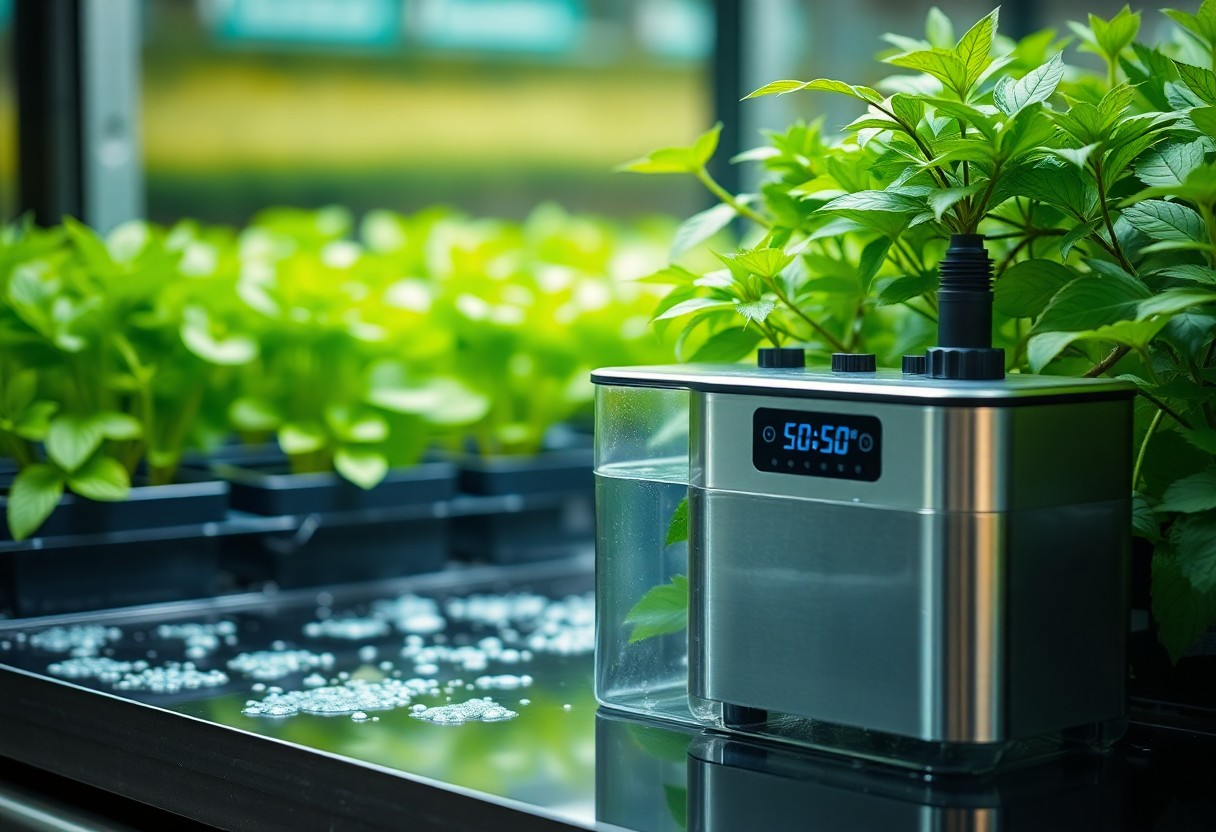
The Future of Air Pump Technologies in Hydroponics
Emerging Trends and Innovations
Smart technology is making waves in the hydroponics sector, with air pump systems becoming increasingly integrated with automated monitoring and control systems. Manufacturers are developing air pumps equipped with IoT capabilities that allow growers to track performance metrics via smartphone applications. These systems can analyze real-time data regarding oxygenation levels, pump efficiency, and energy consumption, ultimately helping users to optimize their setups. For instance, companies are rolling out pumps that automatically adjust airflow based on the nutrient solution’s temperature and pH levels, thereby ensuring that optimal oxygen levels are maintained without the grower having to intervene manually. Moreover, advancements in materials science are yielding quieter, more efficient designs. The latest generation of compressors is now made from specialized composites, significantly reducing vibration and noise levels. Techniques like fluid dynamics modeling are enabling engineers to optimize the internal mechanisms of pumps for maximum output with minimal energy consumption. This enhanced engineering results in ultra-quiet pumps that can be seamlessly integrated into any indoor garden setup while ensuring that they are both reliable and energy-efficient.Predictions for the Next Decade
Anticipating a decade into the future, the hydroponics sector is likely to witness an explosion of energy-efficient air solutions. With increasing global attention on sustainability, air pumps are poised to encompass energy recovery systems that actively utilize waste energy produced during operation. Such innovations could lead to air pumps that not only consume less power but also return energy to the grid or the system itself, further reducing operational costs for growers. Additionally, major players in the market will likely focus on creating modular systems that can be easily upgraded, offering customers the flexibility to enhance their setups as technology evolves. In the next ten years, air pumps are expected to see increased interoperability with other hydroponic equipment. Advanced algorithms could enable real-time adjustments across multiple devices, resulting in harmonized operation tailored to individual crop needs. Biometric sensors could even be integrated into air pumps to monitor plant health directly, providing data-driven insights that dictate adjustments in airflow and oxygen delivery. Access to such high levels of automation will allow growers to maximize yields while minimizing resource expenditure, undoubtedly setting new industry benchmarks for efficiency. Following industry trends closely, one can predict that the integration of artificial intelligence (AI) and machine learning into air pump technology will enhance the autonomy of hydroponic systems. Through data analytics, AI-powered pumps will adapt to environmental changes, optimizing oxygenation levels based on the different growth stages of plants. This evolution in air pump design and functionality not only points to a future defined by precision agriculture but also a more sustainable approach to indoor farming.Conclusion
As a reminder, selecting the best air pump for Deep Water Culture (DWC) systems in 2025 requires careful consideration of factors such as noise levels, reliability, and efficiency. Those looking to enhance their hydroponic gardening experience will find that investing in a quality air pump can significantly improve plant health and growth rates. He, she, or they should pay attention to detailed product specifications and customer reviews to ensure that their chosen pump meets their specific needs and expectations. With several exceptional options available, growers can confidently make informed decisions that will benefit their DWC systems.
Ultimately, the right air pump can make a substantial difference in the overall success of a DWC setup. By prioritizing quiet and reliable models, individuals can create an optimal growing environment that promotes healthy roots and robust plants. With the insights provided in this guide, he, she, or they will be well-equipped to choose the best air pump that aligns with their gardening goals and helps them achieve outstanding results in their hydroponic endeavors.
FAQ
Q: What are DWC systems and why are air pumps important for them?
A: Deep Water Culture (DWC) systems are a type of hydroponic growing method where plant roots are submerged in nutrient-rich water. Air pumps are important for DWC systems as they provide oxygen to the water, which is vital for root health and the overall growth of the plants. Without adequate aeration, plants can suffer from oxygen deprivation, leading to poor growth or even death.
Q: What features should I look for in the best air pumps for DWC?
A: When identifying air pumps for DWC, consider features such as noise levels, airflow rate, and durability. Quiet operation is important for home setups, while a high airflow rate ensures that your plants receive sufficient oxygen. Durability indicates the pump’s lifespan, and energy efficiency can help save on electricity costs.
Q: Are there any specific brands recognized for making quiet and reliable air pumps in 2025?
A: Several brands stand out in 2025 for producing quiet and reliable air pumps suitable for DWC systems. Brands like EcoPlus, VIVOSUN, and Hydrofarm have received positive reviews for their efficient and low-noise models, making them popular choices among hydroponic growers.
Q: How often should I run the air pump in my DWC setup?
A: It is generally recommended to have your air pump running continuously to maintain constant aeration in the nutrient solution. Some growers choose to use a timer to turn the pump off for short intervals, but this depends on the specific needs of the plants and the design of the DWC system.
Q: What is the recommended airflow rate for air pumps used in DWC?
A: The recommended airflow rate typically depends on the size of your DWC system and the number of plants. In general, an airflow rate of about 1 to 2 liters per minute (LPM) per gallon of water is a good guideline. For larger systems, you may need a pump that can provide greater airflow to ensure all plants receive adequate oxygen.
Q: How do I maintain my air pump for optimal performance?
A: To keep your air pump performing well, regularly check for blockages in the air stones and tubing. Clean these components periodically to prevent buildup. Additionally, ensure that the pump is placed in a well-ventilated area to avoid overheating. Following the manufacturer’s maintenance instructions can also help extend the life of the pump.
Q: Are there any downsides to using air pumps in DWC systems?
A: While air pumps are important for oxygenating the water in DWC setups, there can be downsides. Excess noise from the pump can be disruptive, and if a pump fails and is not monitored, it can lead to oxygen deprivation, harming your plants. It’s important to choose a quality pump and check it regularly for reliable operation.

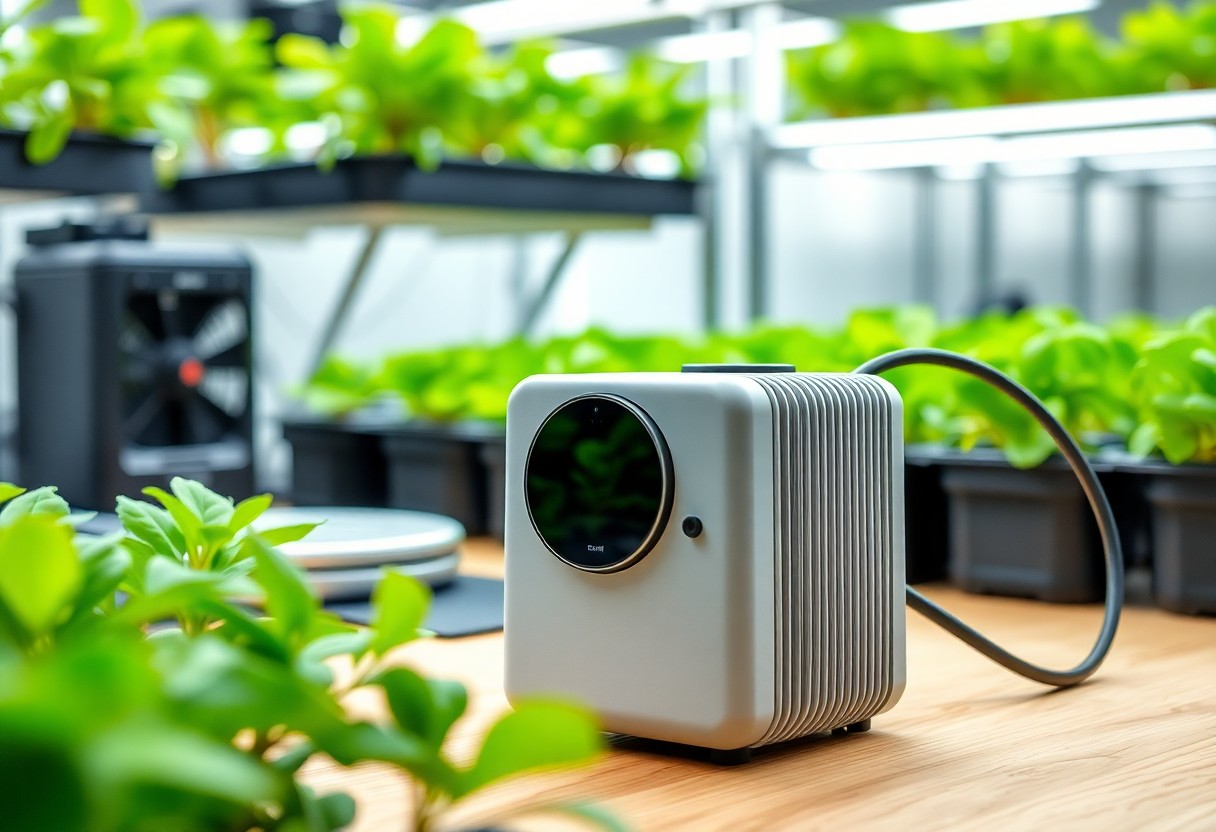
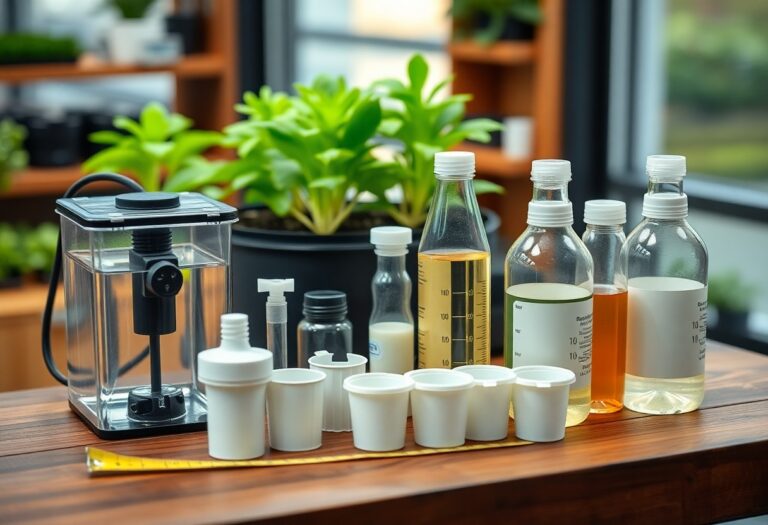
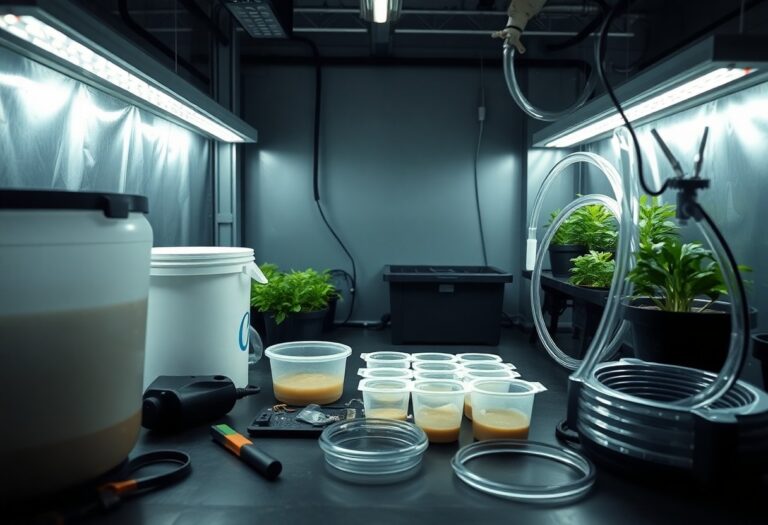

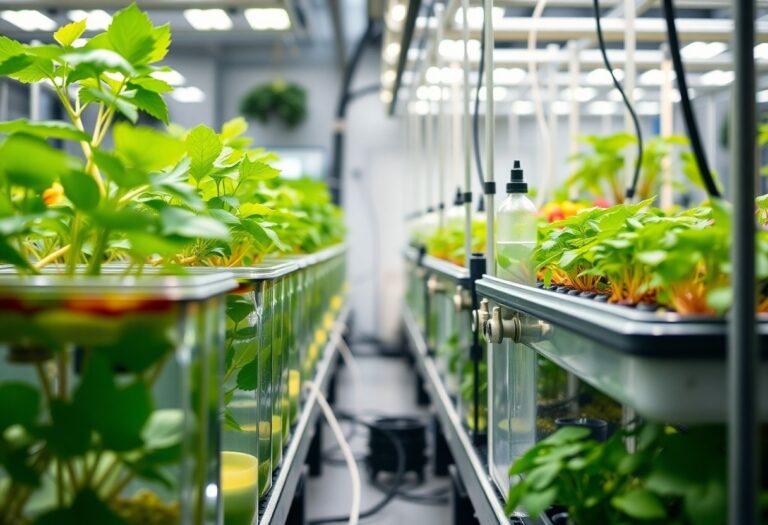
Leave a Comment